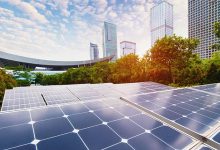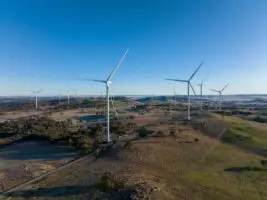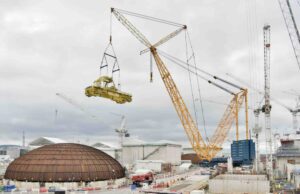A new report says accelerating eight existing technologies across renewable energy, electric transport and lab-grown food can do the heavy lifting on climate action and cut greenhouse emissions by 90 percent within fifteen years.
Californian think tank RethinkX – co-founded by Stanford University technology expert Tony Seba, is advocating for a technology and market-led approach in its report Rethinking Climate Change.
The group has identified eight priority technologies that are either already commercially available and competitive today, or can be deployed to market before 2025.
“Furthermore, these very same technologies will also make the cost of carbon withdrawal affordable, meaning that moonshot breakthrough technologies are not required to go beyond net zero from 2035 onwards,” Seba and co-author James Arbib say.
They say the the biggest and most immediate opportunity is in the energy sector (57.6 per cent of greenhouse gas emisisons) which can be rapidly transformed by affordable, scalable low-carbon technologies in the form of solar PV,, wind power and lithium-ion storage batteries.
“We can achieve a net zero future – affordably, on time, and opening up huge opportunities for carbon-free prosperity – if policymakers make smart choices to enable these highest impact technologies and stop supporting legacy industries that are getting in the way.”
The focus on existing technology solutions is in stark contrast to the Australian Coalition government’s “technologies not taxes” motto, which is investing in a different set of technologies, including carbon capture and storage, soil carbon, energy storage, hydrogen, and low carbon steel and aluminium.
The RethinkX analysis comes amid of series of a new reports that underline the importance of rapid cuts of emissions over the next decade to avoid depleting the carbon budget and to avoid catastrophic tipping points such as the threat of disruption to key systems such as the Gulf Stream.
See: Net zero target for 2050 is too slow, and a strategy for climate failure
RethinkX argues for focused effort into eight solutions in three sectors. These are solar, wind and batteries in energy; autonomous, electric vehicles and ‘transportation-as-a-service’ in transport; and in food, ‘precision fermentation’ and ‘cellular agriculture’ (broadly lab grown foods, especially proteins).
Tony Seba said society has a choice. “We can either accelerate the energy, transportation and food disruptions and solve the climate crisis by ushering a new era of clean prosperity, or we can waste decades and trillions of dollars propping up the incumbent system”, he said.
In its report, RethinkX argues conventional climate change analyses tend to underplay the speed and scale at which technology ‘disruptions’ can take hold, citing historical shifts like film to digital cameras and from non-modified to genetically modified corn.
While technologies and markets lead the change, in order to succeed, governments will need to shut down further subsidies and public investments into “doomed incumbent fossil fuel, legacy road transportation, livestock and commercial fishing” the report states.
RethinkX presents three different scenarios. Its central “Be sensible” scenario is the one that deliver 90 per cent emissions reductions by 2035 and net zero by 2040. This can be done by choosing to deploy and scale only those core technologies available today.
The most ambitious response is the “Get Serious” scenario, where policy-makers proactively accelerate the disruption of energy, transportation and food technologies over the 2020s and reforest 20 percent of land freed up by food sector disruptions.
This would enable a GHG emission decline of over 60 percent by 2030 and 100 percent before 2035. By 2040, carbon emissions would be 20 percent below ‘net zero’.
There is also the sadly familiar “Get stuck” scenario, where policy makers “might unwittingly or otherwise delay the disruptions” through subsidies and financial support for fossil fuels, utility monopolies and the livestock sector.
This results in emissions rising for another five years and global temperatures exceeding 2 degrees – placing the world squarely in the “climate danger zone.”
The techno-utopian tone adopted by RethinkX strikes a similar note to Decarbonisation Futures, a report by Melbourne-based think tank ClimateWorks Australia.
Released in 2020, ClimateWorks Decarbonisation Futures presented scenarios showing how the rapid adoption of priority technologies could reduce emissions to net zero.
Solar, wind and batteries played a critical role in cutting electricity sector emissions in the ClimateWorks modelling too, according to Cameron Butler, a senior project manager and an author of Decarbonisation Futures.
“We saw the main limiting factor in the speed of that [electricity] transition being, how quickly the existing coal fired generation was being retired… if you’re not having that strong policy push to get rid of them and bring that renewable energy in, that it’s not likely to happen quick enough”, he said.
On transport, Elliot Fishman director of the Institute for Sensible Transport said the focus on electric vehicles was “no surprise” to him. He said the best outcome for cities would involve accelerating the right type of electric vehicles, particularly ebikes and scooters instead of cars.
Fishman cautioned that fully-autonomous vehicles were yet to be proven safe in city environments, and the technology had the potential to lead to unintended consequences like ‘empty miles’ as vehicles drive around without passengers.
Fishman said governments had a clear role to play in transport and urban planning to make walking, cycling and public transport compelling choices.
“Our roads basically represent a picture of society as it looked in the 1940s, ‘50s and ‘60s”, he said, “that needs to change to reflect the contemporary priorities of a more sustainable, more healthy and active transport friendly city”, he said.









